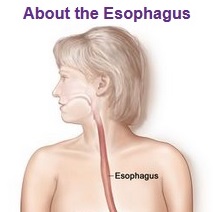| Online: | |
| Visits: | |
| Stories: |
(CBS News) Modern wheat is a “perfect, chronic poison,”
Davis said that the wheat we eat these days isn’t the wheat your grandma had: “It’s an 18-inch tall plant created by genetic research in the ’60s and ’70s,” he said on “CBS This Morning.” “This thing has many new features nobody told you about, such as there’s a new protein in this thing called gliadin. It’s not gluten. I’m not addressing people with gluten sensitivities and celiac disease. I’m talking about everybody else because everybody else is susceptible to the gliadin protein that is an opiate. This thing binds into the opiate receptors in your brain and in most people stimulates appetite, such that we consume 440 more calories per day, 365 days per year.”
Asked if the farming industry could change back to the grain it formerly produced, Davis said it could, but it would not be economically feasible because it yields less per acre. However, Davis said a movement has begun with people turning away from wheat – and dropping substantial weight.
“If three people lost eight pounds, big deal,” he said. “But we’re seeing hundreds of thousands of people losing 30, 80, 150 pounds. Diabetics become no longer diabetic; people with arthritis having dramatic relief. People losing leg swelling, acid reflux, irritable bowel syndrome, depression, and on and on every day.”
To avoid these wheat-oriented products, Davis suggests eating “real food,” such as avocados, olives, olive oil, meats, and vegetables. “(It’s) the stuff that is least likely to have been changed by agribusiness,” he said. “Certainly not grains. When I say grains, of course, over 90 percent of all grains we eat will be wheat, it’s not barley… or flax. It’s going to be wheat.
“It’s really a wheat issue.”
Some health resources, such as the Mayo Clinic, advocate a more balanced diet that does include wheat. But Davis said on “CTM” they’re just offering a poor alternative.
“All that literature says is to replace something bad, white enriched products with something less bad, whole grains, and there’s an apparent health benefit – ‘Let’s eat a whole bunch of less bad things.’ So I take…unfiltered cigarettes and replace with Salem filtered cigarettes, you should smoke the Salems. That’s the logic of nutrition, it’s a deeply flawed logic. What if I take it to the next level, and we say, ‘Let’s eliminate all grains,’ what happens then?
“That’s when you see, not improvements in health, that’s when you see transformations in health.”
Watch Davis’ full interview in the video above.
CLICK http://www.cbsnews.com/news/modern-wheat-a-perfect-chronic-poison-doctor-says/
=======================================================================================================
CONSIDERING MOST INDIVIDUALS ARE NOT COMPUTER LITERATE; THE FOLLOWING IS SOMETHING THEY NEED TO KNOW WHY THEY ARE GETTING TREATED FOR EVERYTHING “BUT THE PROBLEM”!
ARE YOU POOPED OUT, FATIGUED, DEPRESSED, GETTING DERMATITIS-RASH LATELY? CONSTIPATED? OLD ARTHUR ACTING UP?
TAKE A LOOK AT “CELIAC DISEASE” CAUSED BY FOODS WE EAT! READ THE FOLLOWING! VKD]
http://www.ncbi.nlm.nih.gov/pubmedhealth/PMH0001280/
Celiac disease – sprue
Celiac disease is a condition that creates inflammation and damages the lining of the small intestine. This prevents absorbing components of food that are important for staying healthy. The damage is due to a reaction to eating gluten, which is found in wheat, barley, rye, and possibly oats.
Causes
This damage affects the ability to absorb nutrients properly. A person becomes malnourished, no matter how much food he or she eats.
The disease can develop at any point in life, from infancy to late adulthood.
People who have a family member with celiac disease are at greater risk for developing the disease. The disorder is most common in Caucasians and persons of European ancestry. Women are affected more often than men.
People with celiac disease are more likely to have:
- Autoimmune disorders such as rheumatoid arthritis, systemic lupus erythematosus, and Sjogren syndrome
- Addison’s disease
- Down syndrome
- Intestinal cancer
- Intestinal lymphoma
- Lactose intolerance
- Thyroid disease
- Type 1 diabetes
Symptoms
Gastrointestinal symptoms include:
- Abdominal pain, bloating, gas, or indigestion
- Constipation
- Decreased appetite (may also be increased or unchanged)
- Diarrhea, either constant or off and on
- Lactose intolerance (common when the person is diagnosed, usually goes away after treatment)
- Nausea and vomiting
- Stools that are foul smelling, oily, or and stick to the toilet when flushed
- Unexplained weight loss (although people can be overweight or of normal weight)
Because the intestines do not absorb many important vitamins, minerals, and other parts of food, the following symptoms may start over time:
- Bruising easily
- Depression or anxiety
- Fatigue
- Growth delay in children
- Hair loss
- Itchy skin with a rash (dermatitis herpetiformis)
- Missed menstrual periods
- Mouth ulcers
- Muscle cramps and joint pain
- Nosebleeds
- Seizures
- Tingling or numbness in the hands or feet
- Unexplained short height
Children with celiac disease may have:
- Defects in the tooth enamel and changes in tooth color
- Delayed puberty
- Diarrhea, constipation, fatty or foul-smelling stools, nausea, or vomiting
- Irritable and fussy behavior
- Poor weight gain
- Slowed growth and shorter than normal height for their age
Exams and Tests
- Bone density
- Cholesterol (may be low)
- Complete blood count (CBC – test for anemia)
- Comprehensive metabolic panel
- Folate level (serum)
- Iron level (serum)
- Prothrombin time
- Vitamin B12 level (serum)
- Vitamin D level
Blood tests can detect several special antibodies, called antitissue transglutaminase antibodies (tTGA) or anti-endomysial antibodies (EMA). The health care provider will order these antibody tests if celiac disease is suspected.
If the tests are positive, upper endoscopy is usually performed to sample a piece of tissue (biopsy) from the first part of the small intestine (duodenum). The biopsy may show a flattening of the villi in the parts of the intestine below the duodenum.
Genetic testing of the blood is also available to help determine who may be at risk for celiac disease.
A follow-up biopsy or blood test may be ordered several months after the diagnosis and treatment. These tests evaluate your response to treatment. Normal results mean that you have responded to treatment, which confirms the diagnosis. However, this does not mean that the disease has been cured.
Treatment
You must read food and medication labels carefully to look for hidden sources of these grains and ingredients related to them. Because wheat and barley grains are common in the American diet, sticking with this diet is challenging. With education and planning, you will heal.
You should NOT begin the gluten-free diet before you are diagnosed. Starting the diet will affect testing for the disease.
The health care provider may prescribe vitamin and mineral supplements to correct nutritional deficiencies. Occasionally, corticosteroids (such as prednisone) may also be prescribed for short-term use or if you have sprue that does not respond to treatment. Following a well-balanced, gluten-free diet is generally the only treatment you need to stay well.
When you are diagnosed, get help from a registered dietitian who specializes in celiac disease and the gluten-free diet. A support group may also help you cope with the disease and diet.
Support Groups
Outlook (Prognosis)
Rarely, long-term damage will be done to the lining of the intestines before the diagnosis is made.
Some problems caused by celiac disease may not improve, such as a shorter than expected height and damage to the teeth.
Possible Complications
Delaying diagnosis or not following the diet puts you at risk for related conditions such as:
- Autoimmune disorders
- Bone disease (osteoporosis, kyphoscoliosis, fractures)
- Certain types of intestinal cancer
- Low blood count (anemia)
- Infertility or repeated miscarriage
- Liver disease
When to Contact a Medical Professional
Prevention
References
- Green PH, Cellier C. Celiac disease. N Engl J Med. 2007;357:1731-1743. [PubMed]
- Kagnoff MF. AGA Institute medical position statement on the diagnosis and management of celiac disease.Gastroenterology 2006;131(6): 1977-1980. [PMC free article] [PubMed]
- Semrad CE. Approach to the patient with diarrhea and malabsorption. In: Goldman L, Shafer AI, eds. Cecil Medicine. 24th ed. Philadelphia, Pa: Saunders Elsevier; 2011:chap 142.
What works?
Figures
PubMed Health Blog…
Read More
- Protein in diet
- Lactose intolerance
- Atopic dermatitis
- Type 1 Diabetes
- Autoimmune disorders
- Systemic lupus erythematosus
- Infertility
- Miscarriage
Recent Activity
Simple NCBI Directory
· Resources
- Chemicals & Bioassays
- Data & Software
- DNA & RNA
- Domains & Structures
- Genes & Expression
- Genetics & Medicine
- Genomes & Maps
- Homology
- Literature
- Proteins
- Sequence Analysis
- Taxonomy
- Training & Tutorials
- Variation
· Popular
· Featured
- Genetic Testing Registry
- PubMed Health
- GenBank
- Reference Sequences
- Gene Expression Omnibus
- Map Viewer
- Human Genome
- Mouse Genome
- Influenza Virus
- Primer-BLAST
- Sequence Read Archive
· NCBI Information
- About NCBI
- Research at NCBI
- NCBI News
- NCBI FTP Site
- NCBI on Facebook
- NCBI on Twitter
- NCBI on YouTube
Source: http://nesaranews.blogspot.com/2014/04/cbs-news-modern-wheat-is-perfect.html














